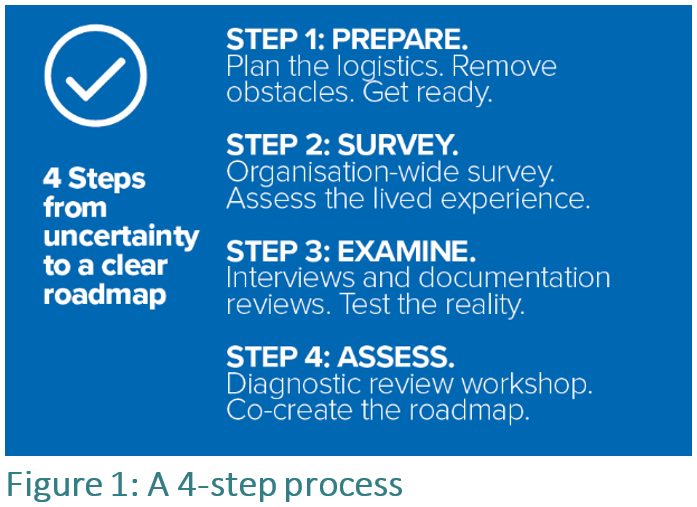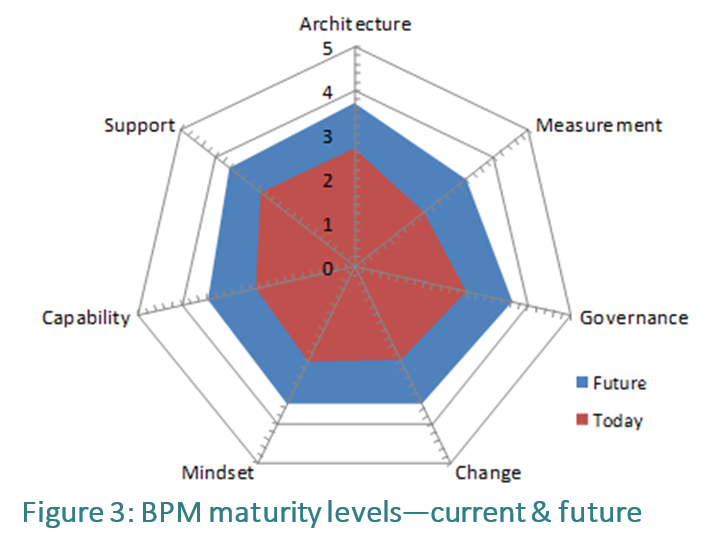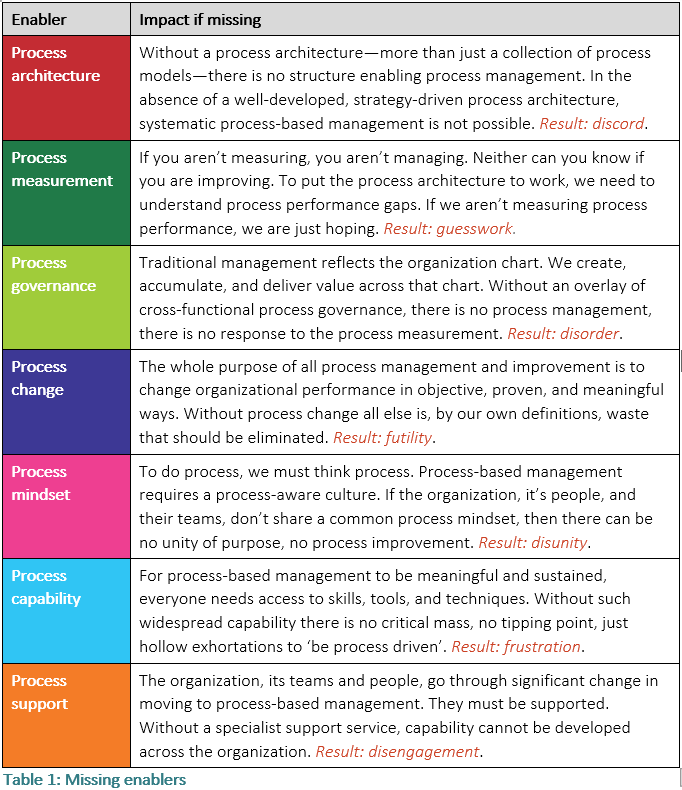Processes Deliver
Every organization makes promises to customers and other stakeholders. Such promises are its reason for existence and are shaped as value propositions in the organizational strategy.

Roger Tregear, Principal Advisor, TregearBPM
Roger spoke at the IRM UK Business Process Management & Enterprise Architecture Conferences Europe 21-24 October 2019, London on the subjects ‘Who’s in Charge? Making Process Governance Real‘ and ‘Fit for Purpose – a Process View of Organisational Fitness.’
The next Enterprise Architecture & Business Process Management Conference Europe will take place 26-29 October 2020, London
Traditional management follows the organization chart with most management activity directed up and down that chart. But how do we get work done? How do we deliver on those promises? We work in collaboration across the organization, not up and down. Is there any box on that chart that can, by itself, deliver products or services externally? No there is not, that’s not the way it works. Processes deliver on our promises.
Most management effort is directed up and down the organization chart, yet we get work done across that chart, i.e. we don’t manage the way we get work done. Obviously, we must manage these cross-functional processes. This means knowing what they are, how they should perform and are performing, and having a new role to respond to ‘horizontal’ performance anomalies and opportunities. This is process-based management, something every organization should do well and continuously improve. Our best performing process should be the process of process improvement.
Measuring Process Performance
We should measure process performance in three ways. One of these is often overlooked.
We need, most importantly of all, hard data about process performance and improvement. Did we reduce the process execution time? Did customer satisfaction go up? Were costs reduced? We also need ‘soft’ data about process performance. Do customers have a good opinion of our processes? Are staff happier in process execution? Are we getting positive testimonials and recommendations?
There’s a third dimension we must also measure. If process management and improvement is fundamental to optimizing performance, then we must be sure we are not only good at it, but also getting better all the time. That’s BPM maturity and it must be measured and developed. Our most efficient and effective processes should be the processes of process management and improvement.
Assessing BPM Maturity
Capability maturity models have a long history with their origins in software development. The five-level maturity model has been used in many other areas, including BPM. At maturity level 1 we can’t spell BPM, at level 5 it has become so ubiquitous as to have virtually disappeared, from conscious thought at least.
As shown in Figure 2 we can combine those five levels with the 7Enablers of BPM to give greatly increased maturity analysis granularity and a very practical assessment and development tool. Having this extra level of maturity assessment means we can make much more specific plans to address more specific issues and deliver real maturity improvements.
We need hard data about BPM maturity and its development pathway. We need a simple and effective mechanism for collecting and analyzing that data.
We deliver a BPM maturity assessment service1 that combines the ‘power of the crowd’, rigorous analysis, and deep experience, in a non-intrusive format, resulting in a BPM maturity development roadmap. It is designed to take a practical middle road between time-consuming, labor-intensive, and expensive approaches, and the trivialization of maturity assessment often represented by simplistic, uncontrolled surveys.

The assessment has three phases: (i) an online survey completed by as many staff members as possible, (ii) an examination phase during which reference documentation is analyzed and key BPM stakeholders are interviewed, and (iii) a diagnostic review workshop to co-create the BPM maturity development roadmap.
The assessment is designed to meet the demands of busy organizational life. Preparation is easy and fast. The online survey is easy to complete, requires no specialist knowledge, takes about 15 minutes, and is done from a web browser on any screen. Analysis and planning are finalized in active, co-creation workshops.
The survey gives us the
subjective opinion of those who respond, and while that is very useful, it must
be tested against objective reality. An experienced consultant examines
documentation, e.g. process architectures, performance reporting, and
interviews selected staff. An adjusted current assessment of maturity, by
enabler and overall, is then available.


What do we want the maturity assessment to be in, say, 12 months? What do we need to do to close the identified gaps? These are the questions addressed in the BPM Maturity Diagnostic Workshop.
The workshop is conducted in two parts, often on separate days to make it easier for participants.
The first part examines survey and assessment data to agree baseline and target maturity levels. We identify and document current maturity levels, the target levels for, say, 12 months’ time, and the challenges that will be faced in closing those gaps.
The second half of the workshop creates the BPM maturity development roadmap that defines what must be done to close the maturity gaps before the next assessment.
Workshops are designed to suit the requirements of each organization. However, each workshop session is usually about three hours in duration. The agenda consists of a mix of working as a single group and in smaller groups to assess and challenge the data and suggested responses. All sessions are highly interactive and carefully facilitated to ensure high-quality outcomes.
The result is not just a maturity assessment but also a roadmap of initiatives, by enabler, to ensure the achievement of BPM maturity as planned.
Enhancing BPM Maturity
Maturity in each of the BPM enablers will not ‘automatically’ increase. We need targeted development plans of properly sequenced activities. Once we have a well-considered BPM development roadmap—Figure 4 is a fictitious example—execution of the planned activities will support the achievement of the target maturity levels at the next assessment.
To achieve and sustain process-based management we need the full mix of all seven enablers to be developing at the same time. Lose any one of them and the balance is upset, leading to failure and loss of commitment to process-based management.
It is not enough to just hope that each enabler will develop automatically. A separate proactive plan and tracking mechanism are needed for each enabler to ensure and sustain enhanced maturity levels.
What are the consequences of a missing enabler? In Table 1 summarizes the impact of each enabler (alone) being missing, or not well developed, from the management mix.


Superpower Ascendancy
The achievement of increasingly higher levels of BPM maturity has profound positive effects on an organization. It’s not just the high score result that is the benefit, it’s also the much wider effect of the conscious, collaborative effort required to understand, target, and achieve that result—the benefits are in both the journey and the destination.
These are some important effects of the well-developed BPM maturity superpower:
Increased organizational agility — deep knowledge of the high-impact processes means that changes can be made more easily, quickly, and safely.
Enriched customer journeys — the customer journey happens along our processes; better processes, better journey.
Improved organizational performance — actively managing the processes that deliver value will improve performance where it really matters.
Enhanced organizational culture — the whole organization consciously working together to improve cross-functional performance creates a positive culture change.
Better technology outcomes — technology is one way to improve process performance; better process knowledge means better technology solutions
Superior decision performance — continuous evidence-based decision making about anomalies and opportunities that really matter leads to much better decisions.
Effective organizational management requires effective process management. Effective process management requires knowledge of the processes leading to process performance improvement. Organizations with higher levels of BPM maturity are better at doing this.
BPM maturity is mission-critical for every organization. A higher level of BPM maturity means increased control, agility, resilience, responsiveness, and sophistication in process analysis, improvement, innovation, and management—leading directly to higher levels of organizational performance.

Developing Your Superpower
Superpower training, i.e. BPM maturity assessments, are available anywhere on the planet. It just needs a little of your time and a desire to make a profound difference.
As the Principal Advisor with TregearBPM (www.tregearbpm.com), Roger Tregear delivers BPM courses and consulting assignments around the world. Roger spends his working life talking, consulting, thinking, and writing about analysis, improvement, innovation, and management of business processes. His work with clients is in organizational performance improvement and problem solving based on BPM capability development, and business process, analysis, improvement, and management. He helps small and large organizations understand the potential, and realize the practical benefits, of process-based management. Roger is the author of the book Reimagining Management. Follow Roger: @RogerTregear
Want to know more? Contact Roger Tregear on +(0)419 220 280 (Australia) or +966 (0)549 32 7462 (Saudi Arabia), or via roger@tregearbpm.com. More information about Roger and TregearBPM at www.tregearbpm.com.
Roger Tregear, Principal Advisor, TregearBPM
1. Assessment starts with a survey operated by Leonardo (www.leonardo.com.au). Subsequent workshops and analysis by TregearBPM build on the survey data to create insights and actions to improve maturity.



Comments
Dear IRM UK team,
I’m currently doing my PhD at the Queensland University of Technology (QUT) in Brisbane, Australia. My topic is regarding BPM maturity models and I’m trying to find examples to actually measure the maturity since most of the publicly available models lack of assessment instrument. I would like to go through your survey to see an example about how to measure maturity and the type of questions you use. Thank you.
Kind regards,
Felipe Masana